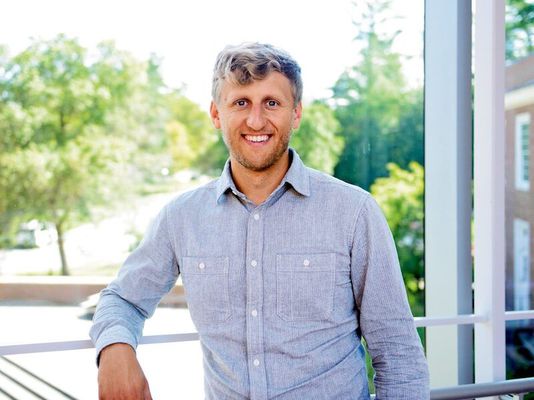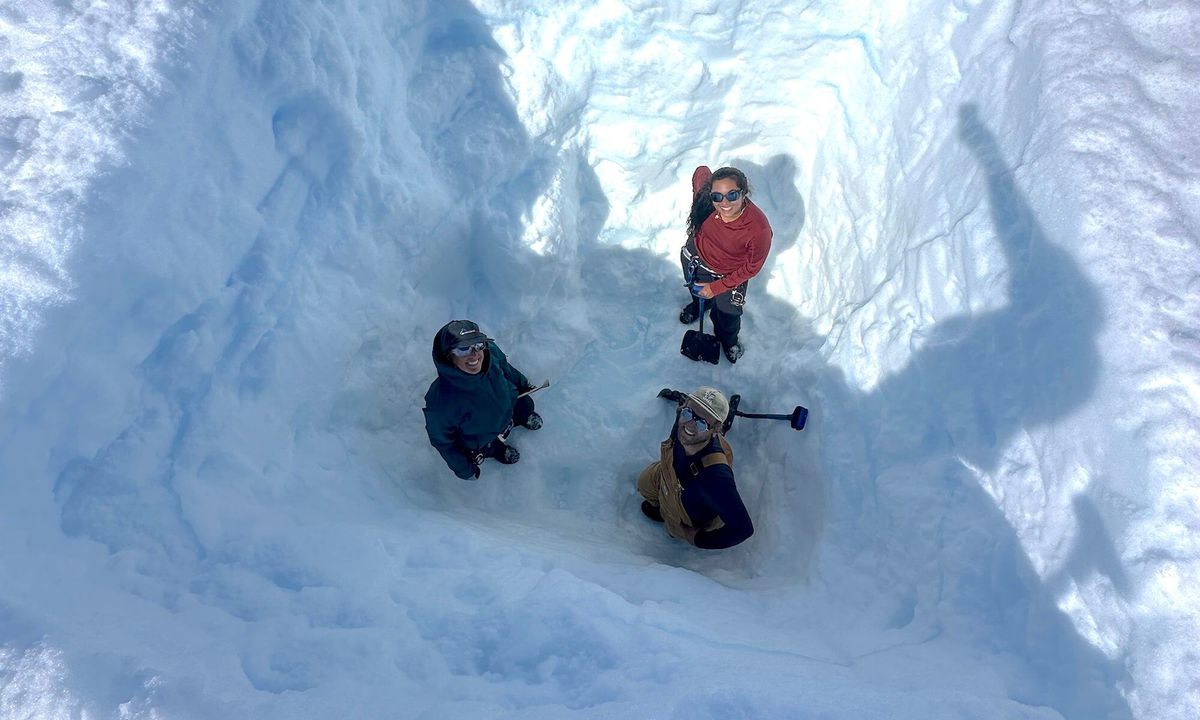- Undergraduate
Bachelor's Degrees
Bachelor of ArtsBachelor of EngineeringDual-Degree ProgramUndergraduate AdmissionsUndergraduate Experience
- Graduate
Graduate Experience
- Research
- Entrepreneurship
- Community
- About
-
Search
All Thayer News


Dartmouth Engineering Professor Colin Meyer Wins NSF CAREER Award
Oct 09, 2025 | by Catha Mayor
Colin R. Meyer, associate professor of engineering and member of Dartmouth's academic cluster, Changing Polar Regions, has received the National Science Foundation's (NSF) CAREER award with over $900,000 in funding. The award is NSF's most prestigious honor for young faculty who "exemplify the role of teacher-scholars through outstanding research, excellent education, and the integration of education and research."

Associate Professor of Engineering Colin Meyer (Photo by Kathryn Lapierre)
Awarded through NSF's Office of Polar Programs, the award supports Professor Meyer's work to "improve subglacial hydrology models for better predictions of sea-level rise," as well as to "deepen students' understanding of general science and spark interest in climate science through active learning with snow and glaciers," according to Meyer's project summary.
"It's a five-year program made up of forty-percent education and sixty-percent research," said Meyer. "They want to support teacher-scholars, and I really like that model. It's something that's great about working at Dartmouth and something that I value because my family is full of educators. I wouldn't get the same job satisfaction if I wasn't a teacher."
Meyer plans to use part of the funding to develop presentations for elementary school students in nearby Lyme, NH. "I live in Lyme, and I think it's fun to work with younger kids because they have a lot of wonder about the world."
Concurrently, at Dartmouth, he plans to teach a broad introductory class about snow and glaciers designed to be accessible to all kinds of students across campus. "There's a correlation in people's minds between Dartmouth and snow, and a lot of people wonder about snow," said Meyer. "I'll be teaching about important concepts such as, 'How does snow form? What makes different types of snow?' and, 'Why does it snow more in some places and not others?'" The class may include field trips to the Dartmouth Skiway, and digging snow pits to examine the layers.
"I also want to teach about the role of glaciers in our climate system," continued Meyer, who points out that Dartmouth happens to be in a place that was "mowed down by a glacier not that long ago in Earth's history, and that is evidenced everywhere in the landscape." For example, the south esker trail that's adjacent to campus.
For the research piece, Meyer will be working to refine and optimize models that use data for the speed, pressure, and location of water flow below glaciers.
"Under all glaciers, there's a point where the ice meets sediment," explained Meyer. "The water that's flowing there, as a function of its pressure, determines how lubricating that interface is." More accurate models of that hidden interface would lead to more reliable predictions of how fast glaciers are going to slide into the ocean. That's important because the speed of ice sliding has a direct impact on the rate and amount of future sea-level rise.
"We don't yet have a great model for that," continued Meyer. "One of the key problems is that every time we've measured the actual water pressure, it's different than the values used in the current models by a factor of ten or more. That's partly because there are logical fallacies with these models that need to be resolved."

Professor Colin Meyer and Research Scientist Aleah Sommers with visiting graduate student Neosha Narayanan (Georgia Tech) in a deep snow pit on the surface of Helheim Glacier, Greenland. (Photo by Jason Antin)
Meyer's ability to resolve those fallacies stems from his previous studies on how ice freezes at that ice-sediment interface. "We have strong observational evidence that there's a patchwork quilt of freezing and thawing underneath glaciers, and the frozen patches determine how water moves between the thawed regions."
The way those hidden rivers move affects the water pressure and therefore how, or if, the glacier slides. "But because we can't see it, it requires us to think harder about how these systems work," explained Meyer.
To facilitate that thinking, Meyer's first task is to compile all existing observations into a single long-term repository. "It's a lot of effort," said Meyer. "It's hundreds of papers from all over the world, cataloging every instance that someone has taken a measurement. An expanded dataset will provide a better understanding of what our empirical baseline is, and then we can start working on the models."
Meyer is one of the few researchers in the world focused on the thermomechanics of subglacial systems. "My piece is one component of what's going to bring about a huge change in what these models look like. We need to understand subglacial hydrology so that it can go into large-scale ice sheet models, and they can better predict sea-level rise."
Although studying climate change and sea-level rise can involve the prediction of dire consequences, Meyer maintains a positive outlook that fuels his dedication to his work. "Word is getting out about sea-level rise, and what gives me hope is that better models and predictions can then spur the needed action in adaptation and mitigation spaces."
Meyer is also a founding member of the Arête Glacier Initiative, a non-profit working to understand what, if anything, could be done to reduce the potential for catastrophic sea-level rise. They're asking, 'Is there a way we could engage with the ice sheets using a nature-inspired solution that would slow them down and prevent collapse?'
Although some think intervening in any way is too risky an option, Meyer contends that it is always helpful to increase knowledge and understanding. "Right now, we're focused on learning if it's even possible to intervene," he explained. "A similar argument could be made for emergency exits, where I feel safer just knowing there's a plan. So doing research to understand whether or not we have an emergency exit for sea-level rise seems reasonable to me."
For contacts and other media information visit our Media Resources page.
